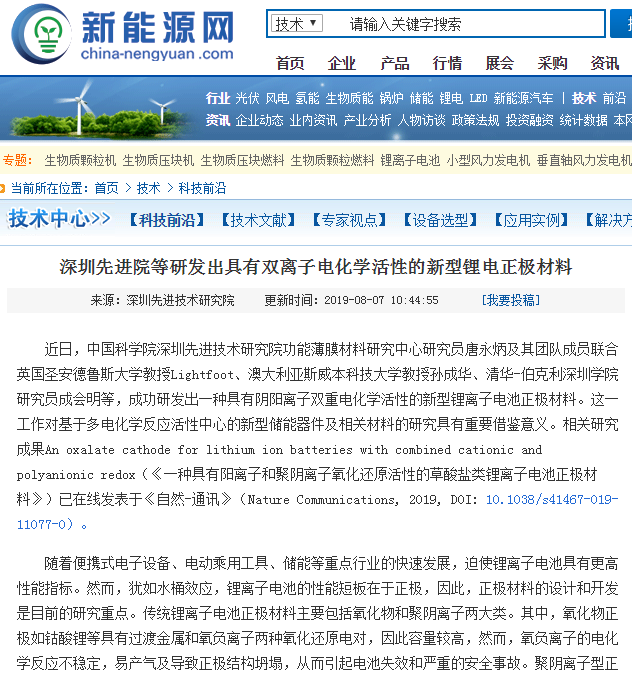
Conventional LIBs cathode materials contain oxides and polyanions. The former, e.g.,LiCoO2, exhibits transition-metal and oxygen-redox, contributing to high specific capacity, whereas the oxygen redox reaction is unstable, leading to gas releasing and structural collapsing, and further causing battery failure or serious safety issues. The later, e.g., LiFePO4, has much improved stability, whereas the polyanionic groups as inactive components degrade the energy density. To realize high-safety and high energy density in cathode, one efficient way is to combine the advantages of oxides and polyanions.
In this consideration, the team developed a novel polyanionic cathode, Li2Fe(C2O4)2, which displayed both iron and oxalate redox activities. The discovery of such dual-redox active polyanionic cathode paves the way for developing novel cathode with multi-redox centers. Relevant results is published in the title of ‘An oxalate cathode for lithium ion batteries with combined cationic and polyanionic redox’ on Nature Communications, and wide reported by media.

New Energy Network and other media reports on the research results